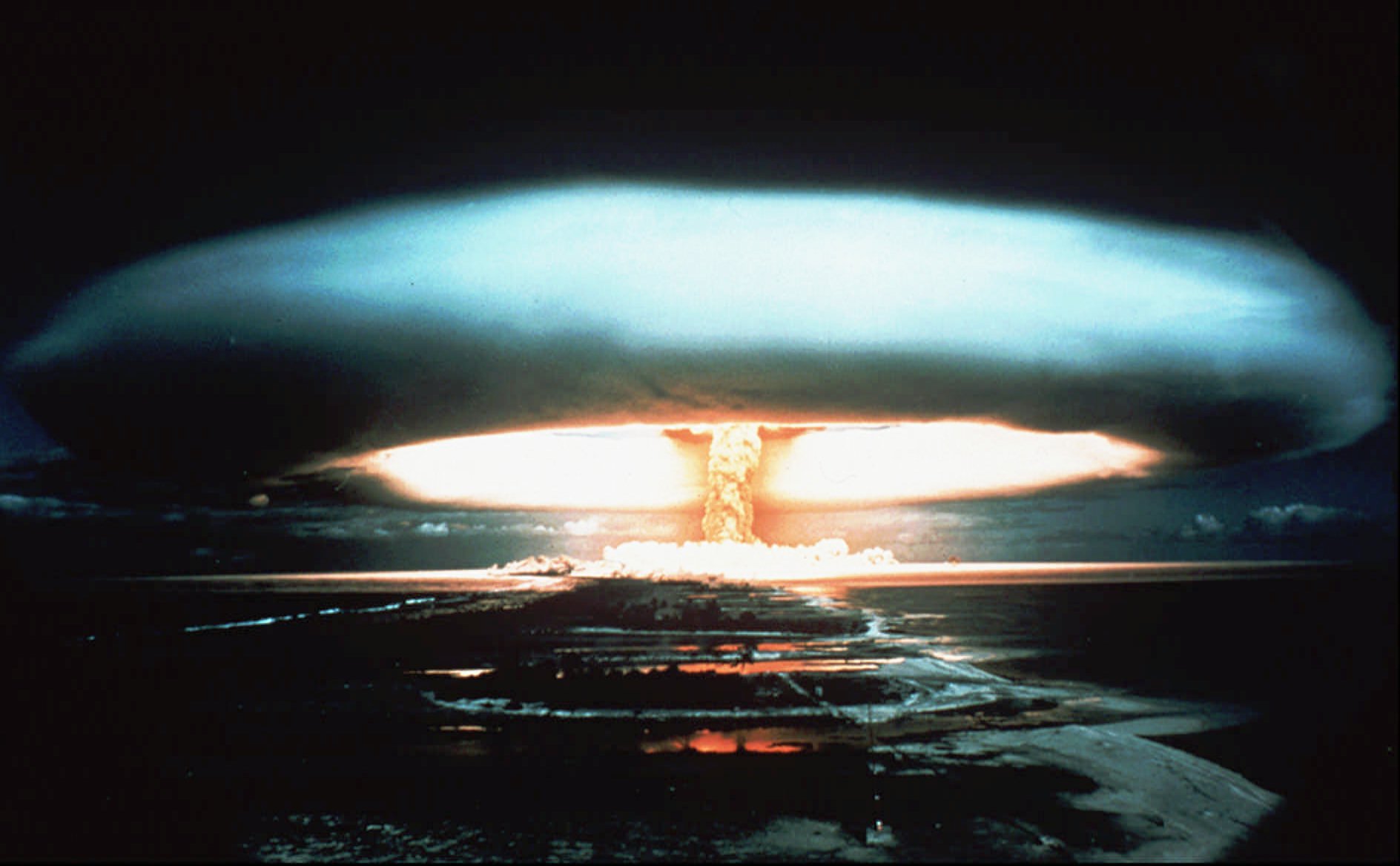
Looking back at the bellicose language that emanated from the Soviet and the American leadership in the early 1980s, the Cold War was unequivocally chilly. But, in spite of the arms race and the brinkmanship rhetoric, there was one area in which the Cold War had begun to thaw.
"Certainly the governments were rather hostile," recalls Michael MacCracken, a climate scientist who worked at Lawrence Livermore National Laboratory in Livermore, California. But "there was a lot of cooperation in the scientific community. American scientists went over to the Soviet Union all the time. There were exchanges on climate. There were a lot of things going on."
Among the most recognizable figures of this detente was a charming, affable Russian named Vladimir Alexandrov, arguably one of the most important climate scientists in the Soviet Union at that time.
"He was a really gregarious kinda fellow," says MacCracken. "He came and stayed in my home. We had him meet with students in my son's school—taught a social studies course that was studying the Soviet Union. We had him read Pushkin poetry."
Alexandrov soaked up America at every turn. He loved hamburgers and barbecue, and often could be found perusing the wares at Kmart. Alexandrov even obtained an Oregon driver's license just so he could tool around, says Andy Revkin, an environmental journalist who wrote a lengthy profile on Alexandrov in 1986.
"At the same time, he became part of the sort of public face of global warming. He was at the Vatican with Carl Sagan at one of his meetings, trying to drive the case for denuclearizing the world."
Such exchanges gave Alexandrov and other Soviet scientists access to much more powerful computing, in particular the famed Cray supercomputer, which could calculate 240 million arithmetic operations per second. On it, an atmospheric model that would require two days to run in Russia took about six minutes to complete. Back home,"they had to struggle with essentially PCs," says MacCracken.
But there was another more fundamental benefit to the collaboration. "The whole idea of these exchanges," says MacCracken, "was to get people to understand each other's culture."
MacCracken says the cultural divide went far beyond things like Kmart. He was once asked by a Soviet counterpart how long it would take to find an apartment in America after a divorce. When MacCraken said probably a day or two, the man looked in disbelief. "He'd lived in his office for a year and-a-half, and he had another year to go to get on the waiting list to get an apartment."
In another memorable chat, a Soviet scientist asked who was in charge of delivering food to New York. MacCracken responded that nobody was in charge. "That was just mind-boggling to him."
These exchanges also helped give Americans a new perspective on the fears that drove their Cold War foes. During one winter visit to the USSR, MacCracken recalled that his Soviet handlers took him about 100 miles outside Leningrad (what is now St. Petersburg) to a town called Novgorod. They brought him there to see the Millennium of Russia, an immense bell-shaped monument ringed by sculptures of czars, military leaders and cultural icons; it commemorates 1000 years of Russian rule.
"And so you're going, 'Wow. That's really impressive.' But then what they tell you is, 'On average, over those thousand years, we were invaded every ten years'—by the Fins, the Norse, the Swedes, the French, the Germans, the British, the—on and on and on," says MacCracken. "And so you sort of get a sense why they have a mentality that's very defensive—that if you put something nearby, they're gonna react."
"I mean when Reagan put his—those short-range missiles in—he put [th]em in Britain. Eh, they didn't care. Put [th]em in Germany, that really mattered. That was a country that not too much earlier killed 25 million of their people in a war."
On another visit to attend a Nuclear Winter conference, MacCracken recalled that a Soviet scientist rushed into his room, exclaiming that President Reagan had just announced that he was launching missiles against Russia. It turned out that Reagan had been making a joke while being wired up for a national broadcast and the microphone was mistakenly live.
"You go to sleep in Moscow when you were over there, and then President Reagan would say something, and—and you'd think, "Holy Toledo! I'm"—"I'm where a missile is targeted," says MacCracken. While that particular statement had been a mistake, "the language that was coming out of the Moral Majority and President Reagan was pretty strong."
In the end, the eagerness of Soviet scientists to harness the American supercomputer for Nuclear Winter modeling heightened Cold War concerns among U.S. intelligence officials. They feared that Soviet military specialists were posing as scholars to crack military codes and improve Soviet weapons design. In 1986, this led the Reagan Administration to seek new restrictions on Soviet access to U.S. supercomputers.
And many ordinary Americans shared this distrust of these exchanges. MacCracken recalls that he opened his hometown paper one day to see that there had been a "secret talk" between a Soviet scientists and local clergy. It turned out the genesis of the story had been a pleasant brunch, which MacCracken had hosted for Alexandrov at his house.
The Soviets proved no less skeptical of the event. "When I was visiting Moscow three months later [Alexandrov] introduced me to "Uncle Yuri," who was, presumably, the KGB person who wanted to hear the story from me," says MacCracken.
That distrust also continued to breed danger. On March 31, 1985, Alexandrov gave a talk about nuclear winter at a disarmament meeting in Cordoba, Spain, then headed back to the Russian embassy in Madrid.
Then, "poof, he vanished," says Revkin.
"And there's been no real evidence of him since, adds MacCracken. "I mean it's still a cold case. Nobody knows, actually, where—whatever happened to him or why."
Alexandrov left behind a wife and daughter.
"He's almost assuredly dead," concludes Revkin, noting that the Alexandrov's disappearance showed that the stakes remained high. This wasn't just, you know, thumb-sucking climate science. It was—I—it was in the middle of a war—a long Cold War—and there were bodies."

Education Resource
Meet The Journalist: Kit R. Roane
In 1983, scientists gave the world a new reason to fear nuclear war. They called it "Nuclear Winter...


